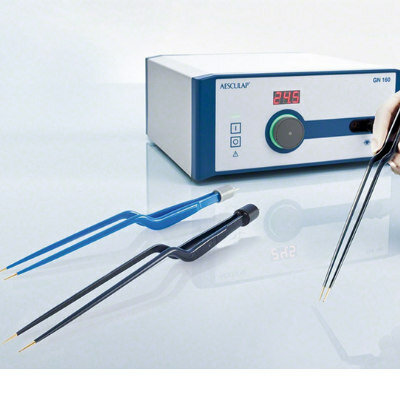Apple Watch App Identifies Irregular Heart Rhythms
|
By HospiMedica International staff writers Posted on 29 Jan 2018 |

Image: Apple and Stanford have jointly launched a study to identify atrial fibrillation (Photo courtesy of Apple).
A first-of-its-kind research study will use the Apple Watch’s heart rate sensor to collect data on irregular heart rhythms and notify users who may be experiencing atrial fibrillation (AF).
The Apple (Cupertino, CA, USA) Heart Study app, launched in partnership with Stanford University School of Medicine (CA, USA), is available for download on the Apple App Store to holders of an Apple Watch Series 1 or later, and who are 22 years or older. To calculate heart rate and rhythm, Apple Watch’s sensor uses green light emitting diode (LED) lights flashing hundreds of times per second and light-sensitive photodiodes to detect the amount of blood flowing through the wrist.
The sensor’s unique optical design gathers signals from four distinct points on the wrist, and when combined with powerful software algorithms, the Apple Watch can isolate actual heart rhythms from other incidental noise. As part of the study, if an irregular heart rhythm is identified, participants will receive a notification on their Apple Watch and iPhone, together with a free consultation with a study doctor and an electrocardiogram (ECG) patch for additional monitoring.
“Every week we receive incredible customer letters about how Apple Watch has affected their lives, including learning that they have atrial fibrillation. These stories inspire us, and we're determined to do more to help people understand their health,” said Jeff Williams, COO of Apple. “Working alongside the medical community, not only can we inform people of certain health conditions, we also hope to advance discoveries in heart science.”
“Through the Apple Heart Study, Stanford Medicine faculty will explore how technology like Apple Watch’s heart rate sensor can help usher in a new era of proactive health care central to our Precision Health approach,” said Lloyd Minor, MD, dean of Stanford University School of Medicine. “We’re excited to work with Apple on this breakthrough heart study.”
AF occurs when the heart's two upper chambers beat erratically. In one form, paroxysmal AF, patients have bouts of erratic beats that begin spontaneously and usually last less than a week. AAD can control the heart rhythm and symptoms of AF, but many patients do not respond well. AF can lead to serious adverse events such as thrombi traveling from the heart to obstruct arteries supplying the brain, causing stroke, or other parts of the body causing tissue damage.
Related Links:
Apple
Stanford University School of Medicine
The Apple (Cupertino, CA, USA) Heart Study app, launched in partnership with Stanford University School of Medicine (CA, USA), is available for download on the Apple App Store to holders of an Apple Watch Series 1 or later, and who are 22 years or older. To calculate heart rate and rhythm, Apple Watch’s sensor uses green light emitting diode (LED) lights flashing hundreds of times per second and light-sensitive photodiodes to detect the amount of blood flowing through the wrist.
The sensor’s unique optical design gathers signals from four distinct points on the wrist, and when combined with powerful software algorithms, the Apple Watch can isolate actual heart rhythms from other incidental noise. As part of the study, if an irregular heart rhythm is identified, participants will receive a notification on their Apple Watch and iPhone, together with a free consultation with a study doctor and an electrocardiogram (ECG) patch for additional monitoring.
“Every week we receive incredible customer letters about how Apple Watch has affected their lives, including learning that they have atrial fibrillation. These stories inspire us, and we're determined to do more to help people understand their health,” said Jeff Williams, COO of Apple. “Working alongside the medical community, not only can we inform people of certain health conditions, we also hope to advance discoveries in heart science.”
“Through the Apple Heart Study, Stanford Medicine faculty will explore how technology like Apple Watch’s heart rate sensor can help usher in a new era of proactive health care central to our Precision Health approach,” said Lloyd Minor, MD, dean of Stanford University School of Medicine. “We’re excited to work with Apple on this breakthrough heart study.”
AF occurs when the heart's two upper chambers beat erratically. In one form, paroxysmal AF, patients have bouts of erratic beats that begin spontaneously and usually last less than a week. AAD can control the heart rhythm and symptoms of AF, but many patients do not respond well. AF can lead to serious adverse events such as thrombi traveling from the heart to obstruct arteries supplying the brain, causing stroke, or other parts of the body causing tissue damage.
Related Links:
Apple
Stanford University School of Medicine
Channels
Critical Care
view channel
Wearable Patch for Early Skin Cancer Detection to Reduce Unnecessary Biopsies
Skin cancer remains one of the most dangerous and common cancers worldwide, with early detection crucial for improving survival rates. Traditional diagnostic methods—visual inspections, imaging, and biopsies—can... Read more
Pulse Oximeter Index Offers Non-Invasive Guides for Fluid Therapy
In patients with acute circulatory failure, deciding whether to administer intravenous fluids is often a life-or-death decision. Too little fluid can leave organs underperfused, while too much can cause... Read moreSurgical Techniques
view channel
Robotic Assistant Delivers Ultra-Precision Injections with Rapid Setup Times
Age-related macular degeneration (AMD) is a leading cause of blindness worldwide, affecting nearly 200 million people, a figure expected to rise to 280 million by 2040. Current treatment involves doctors... Read more
Minimally Invasive Endoscopic Surgery Improves Severe Stroke Outcomes
Intracerebral hemorrhage, a type of stroke caused by bleeding deep within the brain, remains one of the most challenging neurological emergencies to treat. Accounting for about 15% of all strokes, it carries... Read morePatient Care
view channel
Revolutionary Automatic IV-Line Flushing Device to Enhance Infusion Care
More than 80% of in-hospital patients receive intravenous (IV) therapy. Every dose of IV medicine delivered in a small volume (<250 mL) infusion bag should be followed by subsequent flushing to ensure... Read more
VR Training Tool Combats Contamination of Portable Medical Equipment
Healthcare-associated infections (HAIs) impact one in every 31 patients, cause nearly 100,000 deaths each year, and cost USD 28.4 billion in direct medical expenses. Notably, up to 75% of these infections... Read more
Portable Biosensor Platform to Reduce Hospital-Acquired Infections
Approximately 4 million patients in the European Union acquire healthcare-associated infections (HAIs) or nosocomial infections each year, with around 37,000 deaths directly resulting from these infections,... Read moreFirst-Of-Its-Kind Portable Germicidal Light Technology Disinfects High-Touch Clinical Surfaces in Seconds
Reducing healthcare-acquired infections (HAIs) remains a pressing issue within global healthcare systems. In the United States alone, 1.7 million patients contract HAIs annually, leading to approximately... Read moreBusiness
view channel
Philips and Masimo Partner to Advance Patient Monitoring Measurement Technologies
Royal Philips (Amsterdam, Netherlands) and Masimo (Irvine, California, USA) have renewed their multi-year strategic collaboration, combining Philips’ expertise in patient monitoring with Masimo’s noninvasive... Read more
B. Braun Acquires Digital Microsurgery Company True Digital Surgery
The high-end microsurgery market in neurosurgery, spine, and ENT is undergoing a significant transformation. Traditional analog microscopes are giving way to digital exoscopes, which provide improved visualization,... Read more
CMEF 2025 to Promote Holistic and High-Quality Development of Medical and Health Industry
The 92nd China International Medical Equipment Fair (CMEF 2025) Autumn Exhibition is scheduled to be held from September 26 to 29 at the China Import and Export Fair Complex (Canton Fair Complex) in Guangzhou.... Read more









.jpg)




